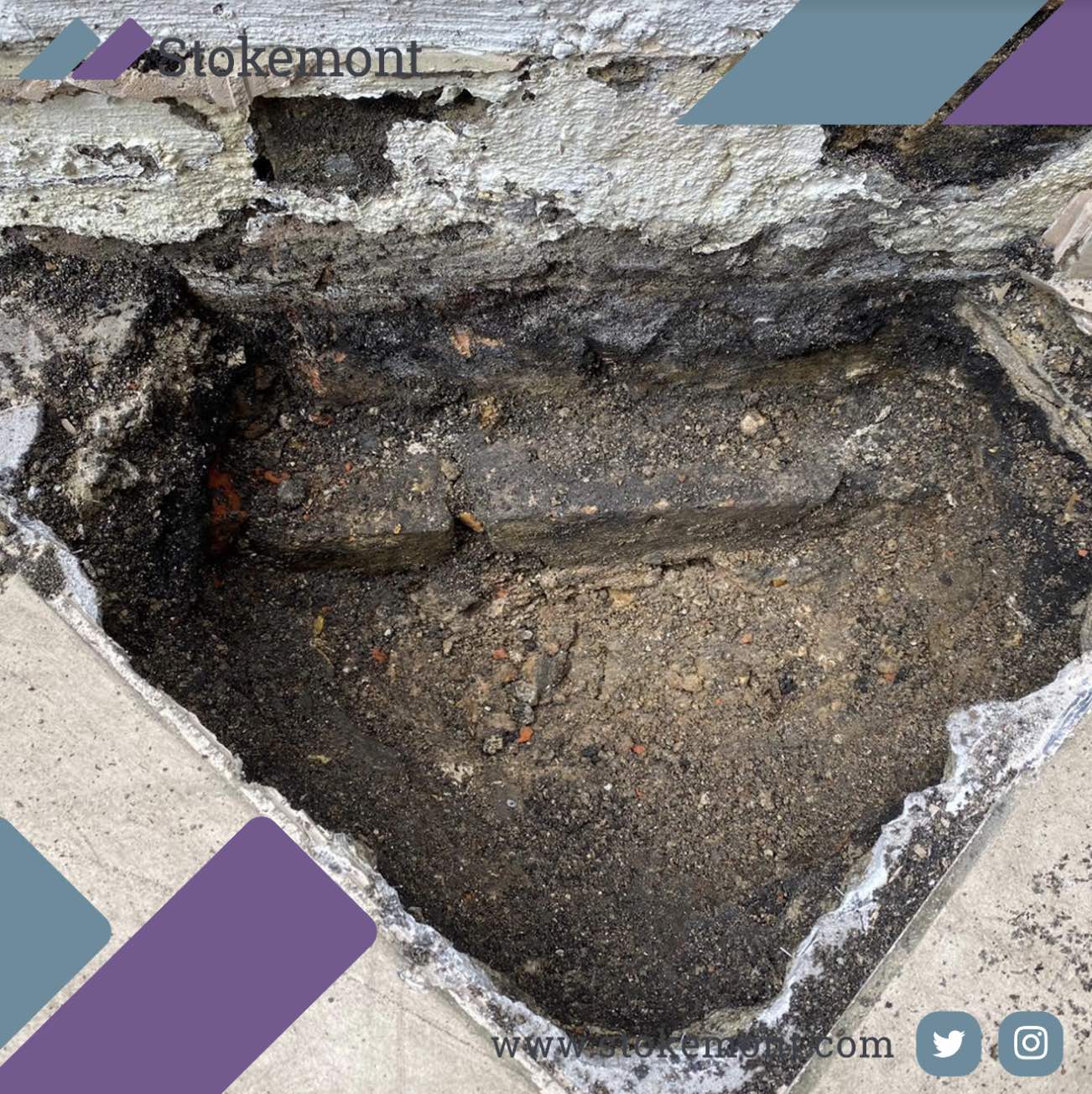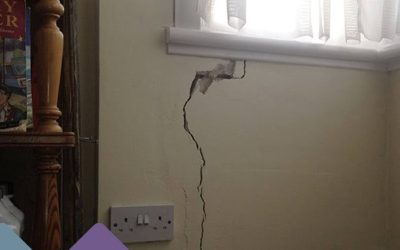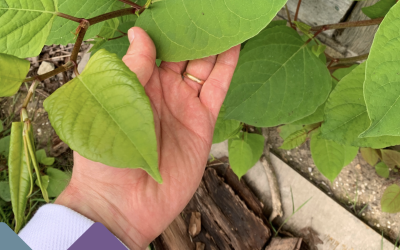In this week’s surveying blog, we will be looking at floors, predominately ground floors and I will be providing you details into what’s actually beneath you’re finished floor coverings. We will also be looking at the most common defects associated with floors and how to attempt to address these issues.
What’s actually beneath the timber boards, tiles or carpets that you frequently walk on at home?
Generally speaking the answer in short is that it depends. Depending on which type of property you are currently living in or what the previous owner of the home may have sorted for, the ground material beneath would differ.
Historically the ground/floor of properties would have been solid which essentially means it would’ve been a mixture of concrete and rubble however this did not happen to be of benefit as floors would consistently become damp and extremely cold during the winter months which as you can imagine removed the homely feeling that we all are accustomed to.
Therefore, as time passed contractors looked towards better materials such as ceramic tiles and damp-proof layers such as asphalt, which is a mixture of different materials including sand and gravel.
Over time it quickly became apparent that suspended timber floors were a preferred method of construction. Constructors turned towards timber floors which are now, commonly used universally as this material was generally warmer on the foot and free from any dampness If the construction had been fully considered.
Types of Floors
Today commonly and especially within the UK the most utilised type of flooring would be either timber ground floors which would be timber boards which sit directly above joists which are commonly referred to as suspended timber floorboards.
Or alternatively, solid ground floors which would at the base consist of a concrete cement mix and further additional layers directly above which would include screed and damp proof membrane then a choice of finish to the top layer which could include stylish ceramic tiles.
Timber Floors
Timber floors are commonly made up of timber floorboards which sit directly above timber joists which are either notched into the brick walls or placed directly above a timber wall plate.
Directly beneath the timbers would be concrete, hard-core or subsoil or a mixture of all three combined.
Between the floorboards, timber joist and concrete ground there is usually a 300 mm deep crawlspace void which consists of sleeper brick walls which is a single skin dwarf height brick wall which the wall plate sits directly above.
Commonly, between the wall plate and sleeper walls, you will find a DPC, also known as a damp proof course, to avoid any potential rising damp or damp penetration. Within the void space, you could also find several air bricks that aid ventilation to the crawl space. Therefore as you can imagine between the concrete floor and the timber boards a lot is going on.
Common problems with suspended timber floors:
Air Bricks:
Given that the air bricks are in situ to allow air to flow to the void space beneath floorboards, this space commonly ends up being infested by pests which include insects, mouses, wasps (Forming Wasp Nest), and Woodworm.
It’s advised that air bricks be adequately maintained and upgraded with sufficient defences to avoid pest infestation.
Timber:
Timber is prone to rotting when wet or poorly ventilated. This commonly leads to failure or weakening of the timber elements which would explain why timber boards tend to bow, creek and undulate throughout.
It’s advised that they should always be a sufficient void between the floorboards and the sub-soil or concrete ground as during adverse weather the sub-soil/concrete would expand when saturated and as result saturate the timber joist as well as boards, therefore, leading to a weakening or rotting to the timber boards and joist.
Solid Brick Construction Properties:
Solid brick construction properties do not have cavities. As joists are notched into brickwork when water or moisture penetrates a solid brick wall or a defective solid brick wall with poor pointing, given that there’s no cavity, water ingress will quickly transfer onto the timber joist ends or the timber wall plate.
As a result, the timber becomes saturated which leads to rot which as a result leads to failure of both the joist and timber boards.
It would be advised that metal joist hangers be utilised to refrain from the trees being notched directly into the solid brick construction wall as this would reduce the likeliness of the timber ends rotting away as metal has much better moisture resistance.
Furthermore, it would be advised that a sufficient damp-proof course be installed to avoid moisture or water ingress. Most recently built homes now tend to have both installations previously confirmed installed by default.
Insufficient Void:
During inspections, we have commonly come across properties which are suffering from dampness to the lower parts of their property due to insufficient voids between the floorboards and the Earth/subsoil.
Generally speaking there should be a 300 mm void between the floorboards and the subsoil. When there is an insufficient void between the Earth/subsoil and timber boards when the subsoil becomes saturated with moisture this means that moisture can be easily transferred to the timber boards and joist, therefore, causing the timber elements to become saturated and damp which therefore leads to dry and wet rot and eventually failure.
It’s advised that if you happen to have an insufficient void between your floorboards and your subsoil/earth that you have a specialist visit and remove the timber boards and joist and excavate and sufficient void which will adequately address and rectify any potential damp issues to the timber boards and joist.
Solid Floors:
Solid floors in their simplest form tend to comprise a slab of concrete which is supported by a levelled sub-base of hard-core/Earth. Historically this used to be all that was however as time passed through trial and error and research development contractors became more advanced and added layers which will include the damp proof membranes, screeds and installation.
Depending on the choice of Contractor the sequence of the layers of flooring will differ for example a contractor may lay a bed of concrete onto a hardcore followed by a damp proof membrane then a layer of insulation in the final layer of a screed finish which comprises of a mixture of cement and sand. However, another contractor may lay a layer of insulation on top of the hardcore followed by a damp proof membrane then a smooth bed of concrete finished with a top layer of screed finish.
Generally speaking, there is a right or wrong approach to the layered finish of the ground however some contractors may argue that one method is more durable than another in the long term.
Common Problems with Solid Floors:
Settlement of Hard-core and Subsoil:
During adverse weather and seasonal changes or poorly considered research on the earth being constructed upon, subsoils, as well as sub-base hard-core, would expand and contract this would transfer movement directly above to the concrete slab as well as screed, therefore, leading to cracking and overall unevenness to the floor throughout causing defect to any final finishes directly above.
If you are planning on constructing A house/building from scratch it’s prudent that the ground and soil be thoroughly investigated by a specialist to avoid any potential future settlement.
Furthermore, if you find that you have obtained frequent movement and damage to your flooring finish after serval attempts to piecemeal repair I would advise that the floor conditions are thoroughly assessed by a specialist through excavation from the results you’ll be able to be fully abreast with the necessary steps that would need to be taken to safeguard the floor from movement. Alternatively, there are cheaper options to rectify a movement issue such as installing new technical fixtures and DITRA matting.
Ground Heave:
Ground heave occurs when you have well-established trees within the perimeter of your property which has been recently removed. This as a result causes swelling to the ground surrounding the roots.
Swelling to the ground can be aggressive about movement to the property’s foundations, at its worst swelling could lift the surface of the floor by as much as 200 mm.
Movement to the ground can also be caused by broken drains which as previously addressed above would lead to saturated ground levels and causes the ground to expand which leads to movement that will be transferred directly to the finished surface, as a result, causing defects to the tiled finishes
It’s advised that when purchasing a property you have a surveyor adequately inspect the perimeter of the property to see whether any potential trees can cause issues shortly. The surveyors’ report should suggest that you notify your insurers of these trees.
Furthermore, during a Pre-Purchase Survey, a surveyor should assess the manholes of the property to identify if there are any potential issues with the drainage system. If it so happens that there are any issues with the drainage systems it’s advised that a CCTV drainage inspection be carried out to ascertain the cause of the drainage issues which should be quickly addressed to avoid any potential issues with the foundations of the property.
Poor Workmanship During Construction:
At the time that the property was constructed contractors may have been incompetent in many aspects such as errors caused during the cement mix as a result meaning the concrete slab is of an inadequate thickness or incorrect mix causing problems to manifest in a tangible form shortly for example being inadequate in bearing loads.
This is also true of a screed finish which could be adequate in its mixture and finish. A screed is a fairly delicate element and will normally be laid towards completion of the building and can be easily damaged with the slightest imperfections. Elements within the process such as being provided a Sufficient time to dry to allow the material to perform to its best ability are prudent.
Tears and splits to the damp proof membrane which is sandwiched in between concrete slab insulation and screeds would mean that capillary action can proceed with no barriers.
This leads to moisture penetration which could lead to failure to the slab from being oversaturated due to an inadequate damp proof membrane from Illy considered care during construction which as a result has made the proof membrane inadequate for the purpose.
It’s advised that when seeking constructors for works, only firms with a great reputation and reviews be contracted.
Generally speaking, both timber floors and solid floors if correctly built and considered especially with all the Advance methods of construction and new additions available in these modern times such as DIRTA matting, solid and timber floors will last virtually indefinitely.
If you are in the process of purchasing a house and you have not had a surveyor take a comprehensive look into the property, why not give us a call, one of the members of our team would be more than happy to assist with your potential purchase.




